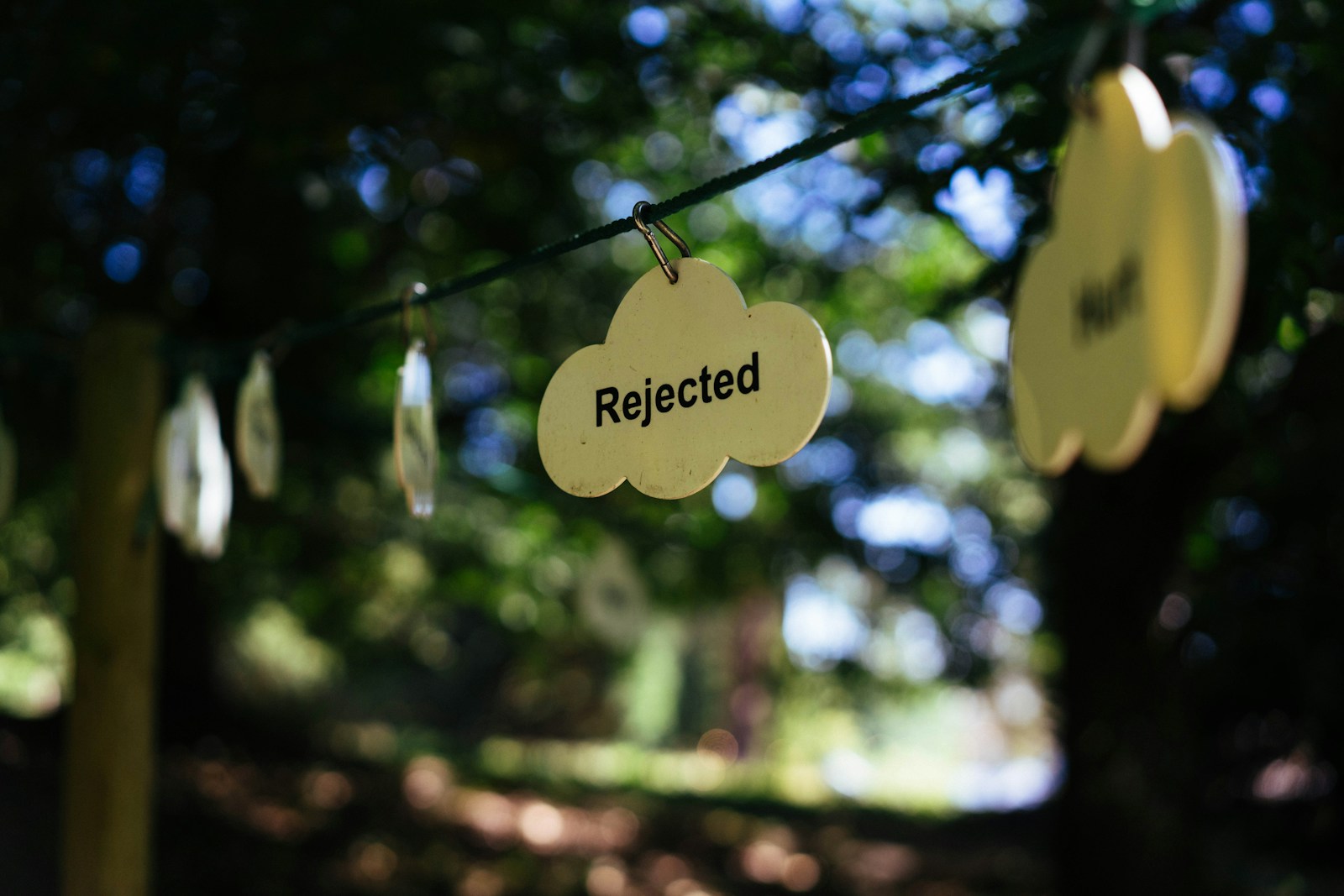Rejection is an inevitable part of life. Whether it occurs in personal relationships, the workplace, creative pursuits, or social encounters, the sting of being turned away or dismissed can feel deeply personal and profoundly unsettling. Many of us fear rejection, associating it with failure or inadequacy. However, learning how to handle rejection constructively is a powerful skill that fosters resilience, enhances emotional intelligence, and ultimately supports personal and professional growth.
Understanding the Psychology of Rejection
Before exploring strategies for handling rejection, it’s important to understand why rejection can hurt so much. Human beings are wired for social connection. From an evolutionary perspective, acceptance within a group was once necessary for survival. As a result, social exclusion can trigger the same neural pathways as physical pain. This is why rejection can feel like an actual, physical blow.
Modern neuroscience shows that the anterior cingulate cortex, a part of the brain associated with emotional and physical pain, lights up when we experience social rejection. It’s perfectly natural to feel hurt or embarrassed after being turned down; these emotional responses are hardwired into our systems.
The Many Faces of Rejection
Rejection comes in various forms, each with its own implications and emotional complexities. Some of the most common scenarios include:
- Romantic rejection: Unrequited love, breakups, or ghosting.
- Professional setbacks: Job application denials, missed promotions, or critical feedback.
- Creative pursuits: Manuscript rejections, artistic criticism, or lack of audience engagement.
- Social exclusion: Not being invited to social events, feeling left out by peers.
Regardless of the context, every form of rejection can provoke feelings of inadequacy, disappointment, or shame. However, it’s possible to transform these moments of vulnerability into opportunities for growth.
The Emotional Impact of Rejection
The immediate aftermath of rejection can be turbulent. You might experience:
- Shock or disbelief – “Did that really just happen?”
- Sadness and self-doubt – “Am I good enough?”
- Anger or resentment – “They don't see my value.”
- Withdrawal or isolation – Avoiding social situations or pursuing new opportunities.
While these feelings are natural, it's important not to let them dictate your self-worth or future actions. Embracing rejection as a data point—not a verdict—can open doors to reflection and self-improvement.
Proven Strategies for Handling Rejection
Effectively dealing with rejection requires intention, self-compassion, and a willingness to learn from the experience. Here's a step-by-step guide to processing rejection in a healthy, constructive way:
1. Allow Yourself to Feel
Ignoring or suppressing your emotional response can backfire. Instead, acknowledge your feelings without judgment. Allow yourself a period of sadness, frustration, or disappointment. Emotional validation is the first step toward healing.
- Talk to a friend or journal about your experience.
- Label your emotions (e.g., “I feel embarrassed,” “I feel hurt”).
- Remember that emotions are temporary and will pass.
2. Challenge Negative Self-Talk
Rejection can trigger harsh inner dialogue. “I'll never be good enough,” or “I always mess things up.” While these thoughts are understandable, they're often distorted and untrue. Practice cognitive restructuring:
- Notice the negative thought.
- Ask yourself, “Is this thought based in fact or fear?”
- Replace it with a more balanced perspective (e.g., “This one experience doesn't define me.”).
3. Maintain Perspective
One rejection, no matter how painful, doesn't dictate your future or determine your value. Consider the bigger picture:
- Even the world's most successful people faced repeated rejection. J.K. Rowling was turned down by multiple publishers before “Harry Potter” found a home.
- Rejection often reflects timing, fit, or external circumstances—not just your abilities or worth.
4. Seek Constructive Feedback
If possible, ask for feedback to learn what factors influenced the rejection. Approach the conversation with openness, not defensiveness. Constructive feedback offers valuable insights for personal growth—and can demystify the reasons behind the decision.
- Frame your request respectfully (e.g., “Could you share what I could improve for next time?”).
- Decide which feedback is actionable and which is subjective.
- Thank the individual for their time and honesty.
5. Reframe the Narrative
Instead of viewing rejection as failure, see it as feedback. Each experience yields lessons that can guide your next steps. Ask yourself:
- What did I learn about myself, my aspirations, or my approach?
- How can I apply this knowledge in the future?
Adopting a growth mindset—the belief that skills and intelligence can be developed through effort—transforms setbacks into stepping stones.
6. Practice Self-Compassion
Be as kind to yourself as you would to a friend. Avoid berating yourself for perceived shortcomings. Acknowledge your courage in putting yourself out there. Treat yourself with empathy by engaging in self-care routines:
- Exercise, even a short walk, to release stress.
- Meditation or deep-breathing exercises.
- Small indulgences: favorite music, a comforting meal, or creative activities.
7. Stay Open to New Opportunities
Resist the urge to withdraw or shut down in response to rejection. Say “yes” to new experiences. Approaching life with curiosity keeps you resilient and reduces the fear of future setbacks.
- Join a new club, class, or online community.
- Set small, achievable goals to rebuild confidence.
- Challenge yourself to try something outside your comfort zone.
How to Handle Specific Types of Rejection
Workplace Rejection
Job rejections, critical performance reviews, or missed promotions can be especially demoralizing. To cope effectively:
- Ask for actionable feedback and areas for development.
- Network with colleagues and mentors for perspective.
- Remember: One organization’s “no” doesn’t reflect your entire skill set.
Romantic Rejection
Heartache is a universal experience. The key is to process emotions rather than internalize despair:
- Allow yourself time to grieve the loss—even for short-term relationships.
- Resist over-analyzing the reasons; sometimes, chemistry just isn’t there.
- Prioritize self-care and avoid jumping into new relationships prematurely.
Creative or Artistic Rejection
Writers, artists, and performers may face countless rejections before “making it.” Never let one critic’s opinion derail your passion:
- Focus on the joy of creation, not just the outcome.
- Analyze feedback for patterns: What keeps coming up?
- Connect with creative communities for encouragement and support.
Social Rejection
Not every group or individual will reciprocate our friendship or interest. Instead of forcing connections:
- Invest energy in those who value and appreciate you.
- Recognize that people’s preferences and circumstances are outside your control.
- Explore new environments where mutual interests and values align.
Common Myths About Rejection
Misinformation and cultural narratives often intensify the pain of rejection. Let’s debunk some frequent myths:
- “Rejection means I'm not good enough.” One person's or organization's opinion does not determine your intrinsic worth.
- “Rejection makes me weaker.” The process of coping with setbacks actually strengthens resilience and adaptability.
- “If I avoid risks, I'll avoid rejection.” Shielding yourself from disappointment also limits growth and positive experiences.
Real-Life Success Stories: Turning Rejection into Opportunity
Some of the world's most influential figures faced significant rejection before achieving their goals. Here are a few examples:
- Oprah Winfrey: Dismissed early in her career, she went on to become a national icon and philanthropist.
- Walt Disney: Was told he lacked imagination before building a global entertainment empire.
- Stephen King: Received dozens of rejections for “Carrie” before its publication launched his legendary literary career.
What sets these individuals apart is not immunity to rejection, but their willingness to persist, adapt, and learn from every “no.”
When to Seek Professional Help
While rejection is a normal part of life, repeated or intensely painful experiences can sometimes lead to depression, anxiety, or low self-esteem. If you find that the pain of rejection is interfering with your daily functioning, relationships, or sense of identity, consider reaching out to a mental health professional. Therapy can help unravel deeper issues, develop coping mechanisms, and build confidence over time.
Practical Exercises to Build Resilience
Resilience is the ability to bounce back from setbacks. Here are three daily practices to strengthen your rejection “muscle”:
- The 100 Days of Rejection Challenge: Inspired by Jia Jiang, try purposefully seeking out small rejections each day—such as requesting a discount at a store or asking to tour a stranger's backyard. The aim is to normalize rejection and reduce its emotional power.
- Gratitude Journaling: Record three things you're grateful for every day, shifting focus from loss to abundance.
- Mindful Self-Affirmations: Repeat affirmations like “I am worthy of love and respect,” or “I learn and grow from every experience,” to reinforce self-esteem.
Conclusion: Rejection as a Catalyst for Growth
Rejection, while painful, is not a dead-end but a detour. When faced with rejection, the initial hurt is a testament to our vulnerability and desire for connection. Yet, by approaching setbacks with curiosity, compassion, and an open mind, we cultivate resilience and prepare ourselves for future success.
If you're spiraling after a recent disappointment, take time to process your emotions—and remember that no single experience defines you. Each “no” brings you closer to the right opportunity, the right relationship, or the right path for your personal journey. Embrace rejection not as an ending, but as an invitation to grow.





